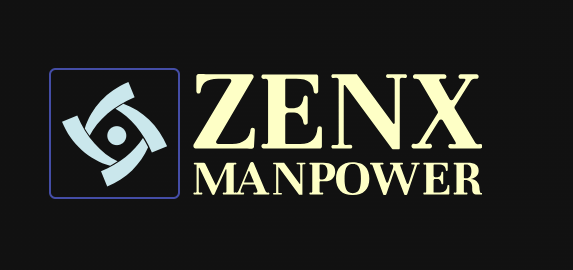Closing the IT Skills Gap: Innovative Strategies for Talent Acquisition and Retention
Discover actionable strategies to overcome the IT skills gap, attract top tech talent, and retain skilled professionals in today’s competitive market. Learn how to future-proof your workforce.
In today’s rapidly evolving digital landscape, the IT skills gap looms large as one of the most pressing challenges facing businesses across industries. This widening chasm between the skills companies desperately need and the talent available in the market isn’t just a minor inconvenience—it’s a significant obstacle that can hinder innovation, growth, and competitiveness.
Let’s dive deep into the IT skills gap and explore innovative strategies that can help your business bridge this divide, attracting and retaining the tech talent crucial for success in our digital-first world.
Understanding the IT Skills Gap: A Growing Challenge
Before we delve into solutions, it’s essential to grasp the magnitude of the IT skills gap:
- A recent CompTIA study reveals that 78% of IT executives consider the skills gap a moderate or significant challenge.
- The World Economic Forum projects that by 2025, the IT skills gap could result in 85 million unfilled tech jobs globally.
These statistics underscore a critical reality: the demand for tech skills is outpacing the supply at an alarming rate. But fear not—with the right strategies, your business can navigate this challenge successfully.
Innovative Strategies to Bridge the IT Skills Gap

1. Reimagine Your Recruitment Approach
To attract top talent in a competitive market, traditional recruitment methods often fall short. It’s time to get creative:
- AI-Powered Talent Matching: Leverage platforms like Hired or Triplebyte that use AI algorithms to match candidates with your specific tech stack and company culture.
- Hackathons and Coding Challenges: Host events that allow potential candidates to showcase their skills in real-world scenarios.
- Open Source Contribution: Look for talent in open-source communities. Contributors to relevant projects often possess the skills and passion you’re seeking.
Pro Tip: When crafting job descriptions, focus on the problems candidates will solve rather than just listing required skills. This approach can attract innovative thinkers who may not tick all the traditional boxes.
2. Upskilling and Reskilling: Grow Your Own Talent
Sometimes, the best way to bridge the IT skills gap is to develop talent internally:
- Implement a robust Learning and Development (L&D) program using platforms like Pluralsight or LinkedIn Learning.
- Create an internal “tech academy” to continuously upskill your workforce.
- Partner with local universities or coding bootcamps to create custom training programs aligned with your specific needs.
3. Embrace Remote Work to Expand Your Talent Pool
The IT skills gap often has a geographical component. Remote work can help you tap into global talent:
- Implement a “work from anywhere” policy, even if it’s just for a few days a week.
- Invest in robust collaboration tools to ensure seamless communication across distributed teams.
- Consider creating satellite offices in tech hubs to attract talent clusters.
4. Cultivate a Strong Employer Brand in the Tech Community
Your reputation as an employer can be a powerful tool in bridging the IT skills gap:
- Actively participate in tech conferences, meetups, and online forums.
- Encourage your tech team to contribute to open-source projects or write technical blog posts.
- Showcase your tech stack and innovative projects on platforms like Stack Overflow and GitHub.
5. Offer Competitive Compensation and Unique Benefits
While not the only factor, compensation remains crucial in attracting and retaining top tech talent:
- Regularly benchmark your salaries against industry standards using tools like Glassdoor or PayScale.
- Consider offering equity or profit-sharing options, especially for hard-to-fill roles.
- Get creative with benefits: offer sabbaticals, learning stipends, or even “hack days” where employees can work on passion projects.
6. Foster a Culture of Continuous Learning
To keep pace with rapid technological changes and bridge the ongoing IT skills gap:
- Implement a mentorship program pairing senior and junior developers.
- Create cross-functional teams to encourage knowledge sharing across different tech domains.
- Offer time and budget for attending conferences, workshops, and obtaining certifications.
The Future of IT Staffing: Trends Shaping the Industry in 2024 and Beyond
7. Leverage Emerging Technologies to Address the Skills Gap
Ironically, technology itself can help solve the IT skills gap:
- Use VR/AR for immersive training experiences.
- Implement AI-powered personalized learning paths for employees.
- Utilize predictive analytics to forecast future skill needs and plan your workforce development accordingly.
Conclusion: A Multifaceted Approach to Bridging the IT Skills Gap

The IT skills gap is a complex challenge that requires a multifaceted solution. By implementing a combination of these strategies—from reimagining recruitment to fostering a culture of continuous learning—your business can not only bridge the current skills gap but also future-proof your workforce against upcoming technological shifts.
Remember, addressing the IT skills gap is not a one-time fix but an ongoing process. It requires commitment, creativity, and a willingness to adapt to the ever-changing tech landscape.
What strategies has your organization found most effective in bridging the IT skills gap? Share your experiences in the comments below—let’s learn from each other and work collectively to build a more skilled and resilient tech workforce for the future.
Want to dive deeper into any of these strategies? Need personalized advice on addressing the IT skills gap in your organization? Reach out to us for a consultation tailored to your unique challenges and goals.


1 Comment